How To Water Cannabis Plants

Watering cannabis can be more complex than you might think. Finding the “Goldilocks zone” will help to achieve optimal growth and a happy crop. Find out all about watering weed here.
Everyone knows that plants love water, and cannabis is no different. These thirsty beings require a huge amount of water throughout their lifetime. Though, that being said, too much can quickly ruin a grow. Understanding how and when to water is one of the most important skills to learn in cannabis cultivation.
Many factors affect how much water plants need, and from where that water should be sourced. Below, we give a comprehensive overview of cannabis plants and their liquid desires.
How often to water cannabis plants
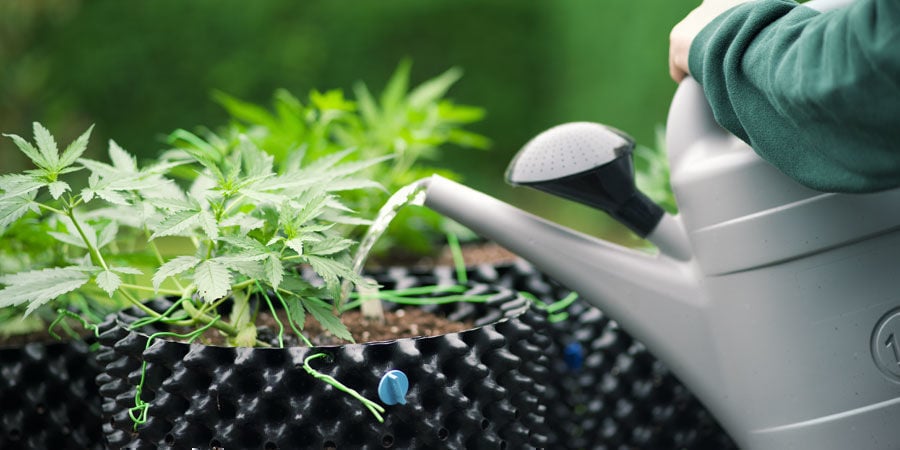
The first thing growers need to know is how regularly to water their weed plants. Getting the wet–dry cycle right is key to assuring healthy, high-yielding, and high-quality specimens. Watering just enough, but not too much, allows for optimal nutrient uptake and minimal exposure to pestilence and disease. So, how often should you water your cannabis plants?
| Plant stage | Watering frequency |
| Germination | Once per 4–7 days |
| Seedling | Once per 3–7 days |
| Vegetative | Once per 2–4 days |
| Flowering | Once per 2–3 days |
Of course, these suggestions should be taken as estimates rather than strict rules. If the soil is still wet, then it’s unlikely you need to water yet. Likewise, if it’s bone dry and your plants are wilting, give them some water already! All going well, in a well-managed environment, a structured schedule should be easy to stick to. But primarily, you must learn to read your plant's needs, and deviate when necessary.
Spraying cannabis seedlings
During the germination and seedling stages, it can be better to spray, rather than water, your plants. As they’ll only be centimetres below the top of the soil, with tiny roots and a very small need for hydration, it can be easy to drown them with overzealous watering! A solid stream of water can also knock them over. Spraying allows you to add much smaller amounts of water in a fine mist to the leaves and soil—which is all they need at this point.
If possible, spray seedlings with pure water (they only deserve the best)! At this stage, the soil should contain all the necessary nutrients for the first phases of growth, and adding anything else is more likely to damage than help. Though it’s not essential to use pure water, you should absolutely refrain from feeding your seedlings at all. It won’t help!
How much water to give cannabis plants
Knowing how much water to give your marijuana plants entails understanding the different factors involved in a grow. Though there are general rules, you once again have to learn to “read” the grow.
Below are some of the main factors determining how much water you should give your weed plants. We can only tell you how each factor affects the quantities of water needed, not how much more or less water you should add depending on each one. Unless you drown them, plants can take a bit too much and a bit too little once in a while. So play around, carefully, until you find the sweet spot.
Growth stage and plant size
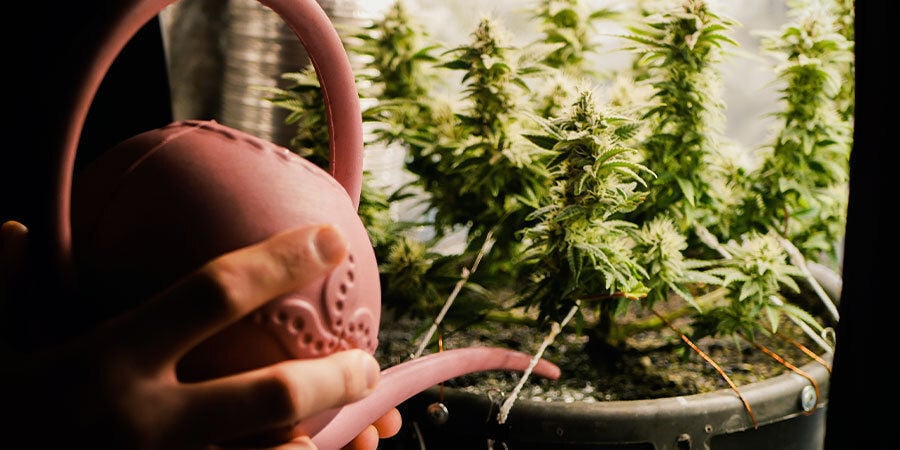
This is one of the most obvious factors. The bigger the plant, the more water it will need. Likewise, plants will be different sizes at different points within the same stage; for instance, a tiny plant in its first week of veg will need a lot less water than a robust vegging plant about to progress into the flowering stage. Furthermore, a vegetating plant will have different water requirements than a flowering specimen, which could require litres at a time.
Generally, you want some runoff to drain out of the bottom of your pot, but not too much—unless you intend to flush out nutrients in the soil. The runoff carries with it the plant’s food, so be aware of this before endlessly drenching the medium.
Growing medium
Different media, and even different types of soil, are more or less effective at retaining water. Generally, whichever medium you opt for, the cannabis root zone likes lots of space, allowing for good drainage and good aeration. The more space you have in your medium, the quicker it will dry off.
However, this is no bad thing. When watering, you should find the water running through pretty quickly, within minutes. Moreover, the top layer should then dry out within around four days (in the veg and flowering stages). If it takes longer to run through, or longer to dry out, then you probably have some drainage issues, and adding an amendment like perlite to your soil could help to space things out a little.
Relative humidity
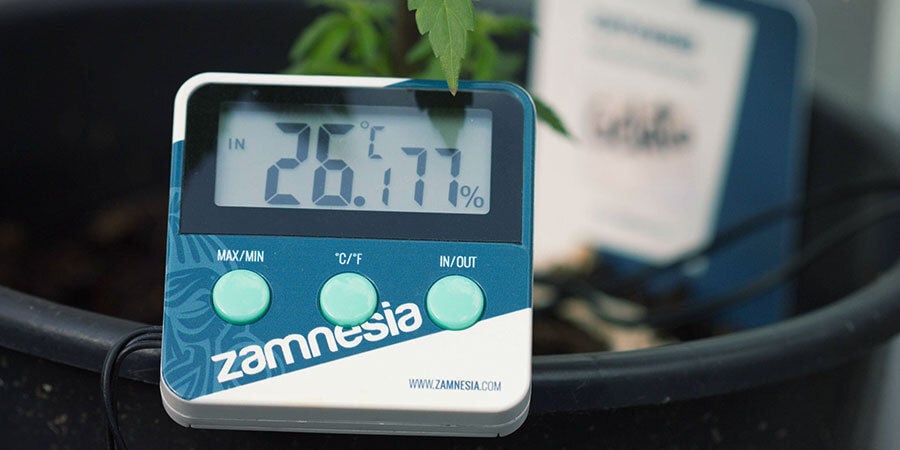
A more humid environment means plants will transpire more slowly, and that water will evaporate more slowly from the soil. This is one reason that seedlings require less watering, as they should be in a more humid environment.
Likewise, very dry air means your plants will need more water. Though not totally essential, a hygrometer (a tool that measures humidity) can help you monitor your environment and determine how much to water your plants.
Temperature
It will come as no surprise that temperature plays a big role in how much water plants need. Higher temperatures mean greater evaporation, and thus a greater requirement for water. In general, cannabis grows are pretty warm—around 20–30°C during the day.
Just keep an eye on the top layer of soil (the top 5cm or so), and when it properly dries out, it’s time to water again. If temperatures are hotter, give it more water, as it will begin to evaporate much faster, with much of it disappearing before it’s properly soaked into the soil.
Light intensity
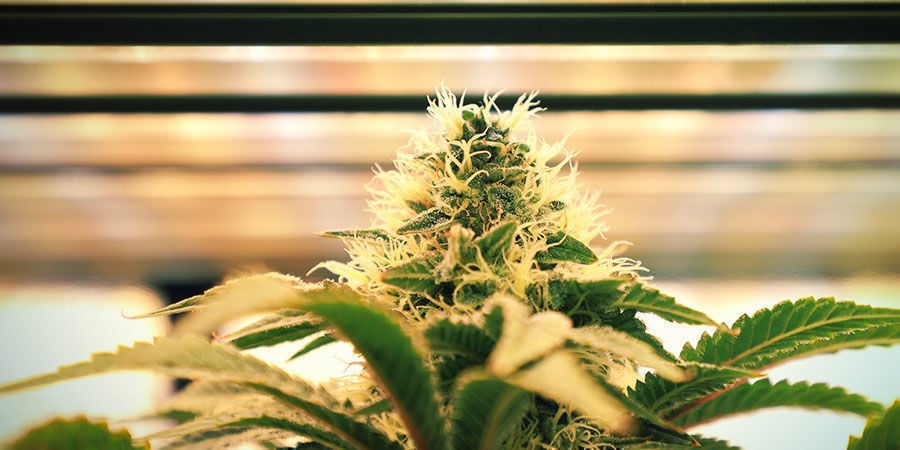
Tied up with temperature is lighting. Old-school grow lights—such as HID—give off a lot of heat and will blast the top layer of the soil with direct, dry heat. This inevitably means it will dry out faster and require greater quantities of water. Modern LEDs give off much less heat, which means your plants will require significantly less water.
Container size
A larger container means a greater volume of soil (or growing medium), and therefore more water is needed. A larger container also means that the plant’s roots will grow bigger, as will the rest of the plant. So be aware that the bigger the pot you choose, the more thirsty your plant will be!
Best time to water cannabis plants
There is actually some debate around when it is best to water cannabis plants. Some prefer to water in the morning, just as the plant is about to start photosynthesising. The downside of this is that whether by sun or artificial light, large amounts of water will quickly be lost to evaporation.
Accordingly, many choose to water in the evening so the water can soak into the soil overnight. If you opt for this, don’t do it too late, as a waterlogged pot promotes the growth of things that can damage your plant’s health!
How to tell if a cannabis plant needs watering
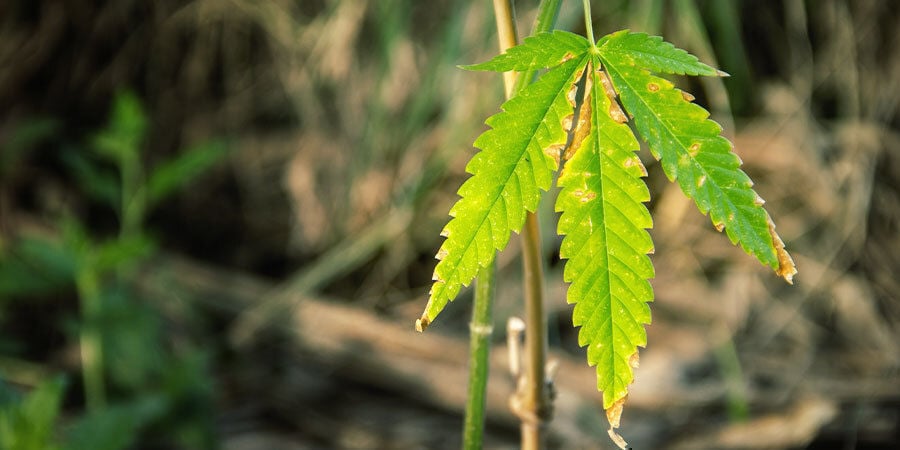
The easiest—and usually best—way to tell if your plants need watering is simply to stick a finger, around a knuckle deep, into the soil. If it’s dry, you can water. If it’s moist, hold off. For most growers, this is the beautifully simple, main method.
Another is to lift the pot and see how heavy it is. A soaked pot will be much, much heavier than a dry one. This method has some issues, though. First, depending on the size of your grow space, lifting a pot may not be very easy. Second, depending on the size of your pot/plant, you might not be able to.
With these methods in mind, it’s important to take some cues from the plant, too. The soil might be dry, but if the plant is showing signs of being overwatered, you need to let it dry out some more.
What underwatered cannabis plants look like
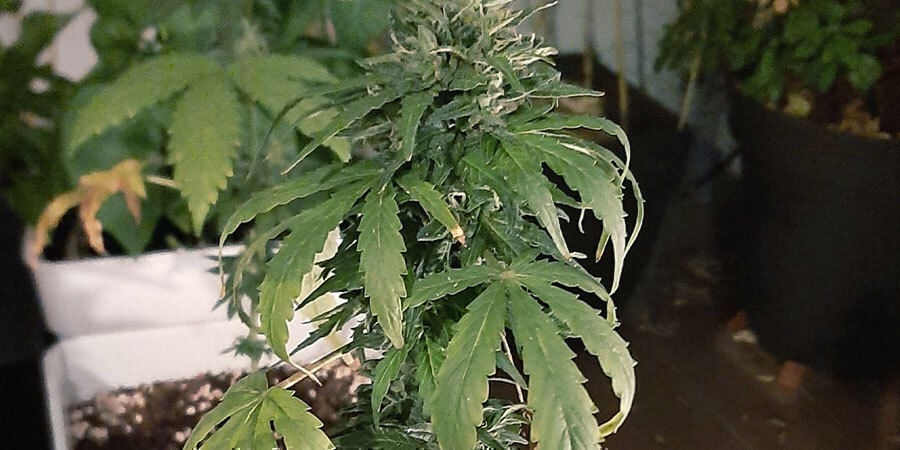
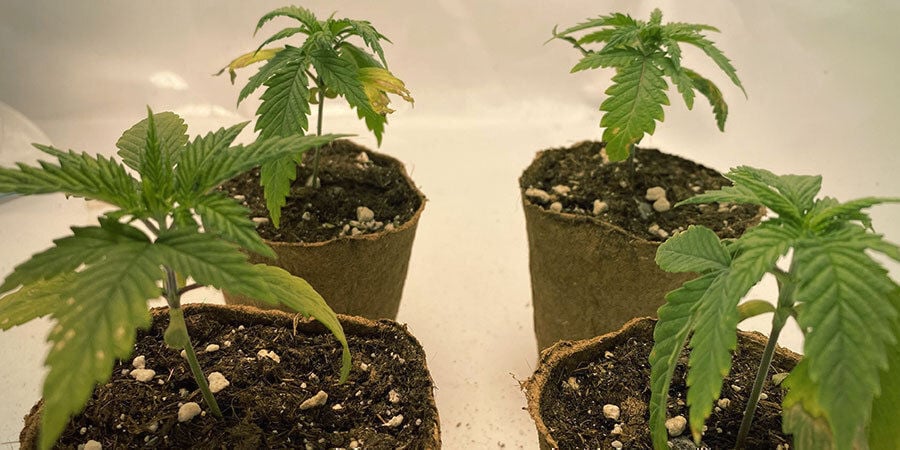
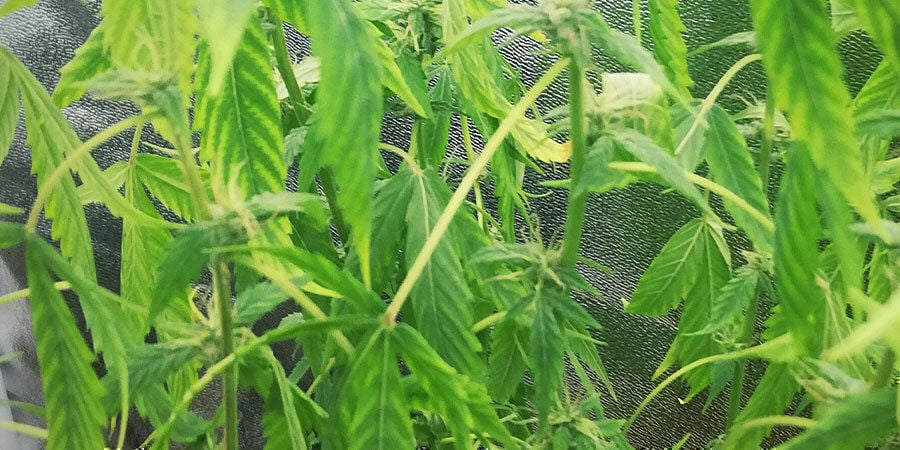
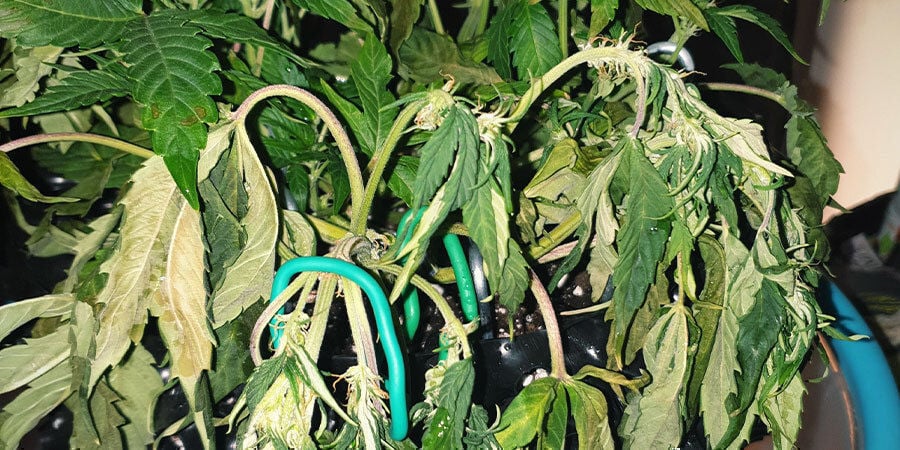
Here are some signs your plant is thirsty:
- Wilting, dry look
- Yellow or brown leaves
- Brittle
- Stem bending (if it’s really dried out)
Be careful to make sure that your plant is exhibiting signs of dehydration, rather than overhydration, as they can be pretty similar at first glance. Ultimately, an underwatered plant is happier than an overwatered one.
What overwatered cannabis plants look like
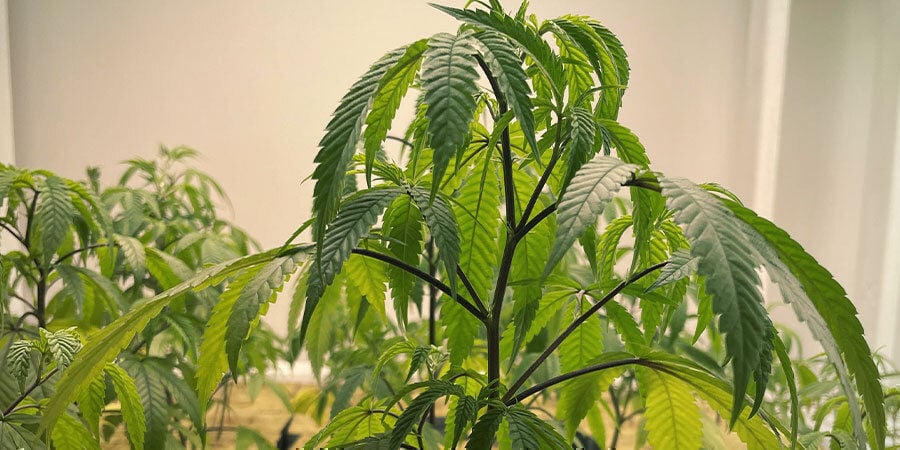
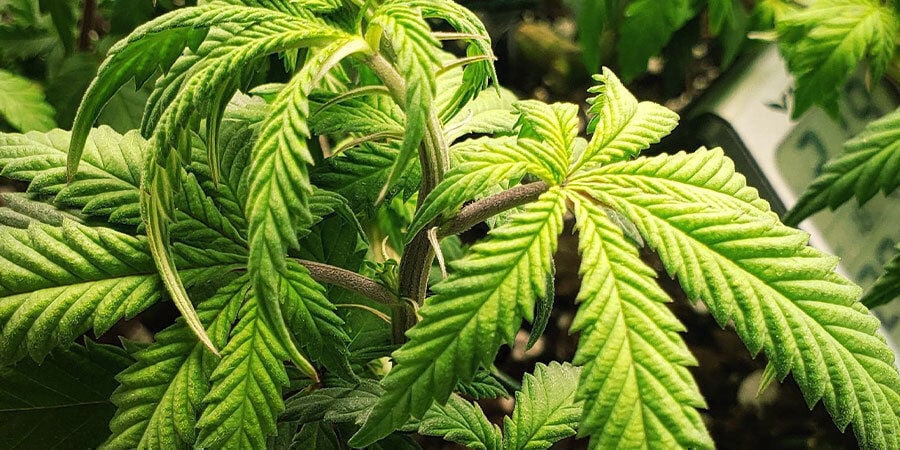
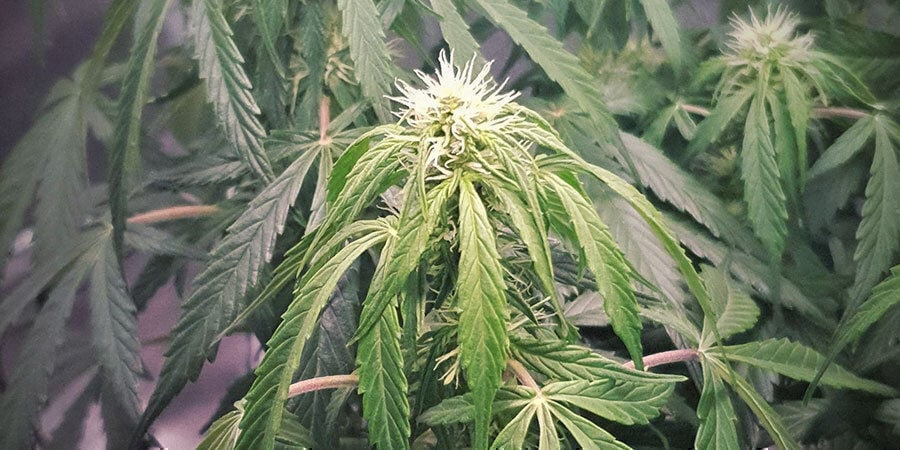
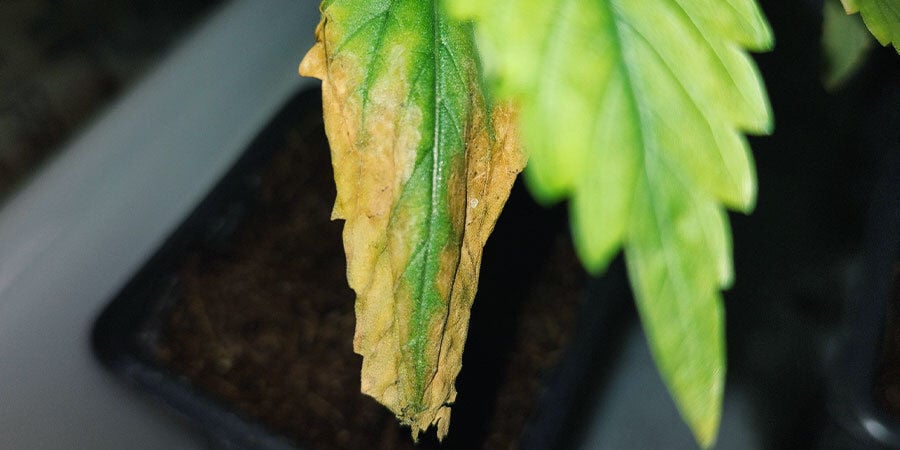
Here are some signs you might have overwatered your plant:
- Wilting
- Yellow or brown leaves
You might notice that these symptoms are the same as the above—so here’s how to tell the difference. The leaves on an overwatered plant will turn yellow and brown from the bottom first, and move upward node by node. A dehydrated plant will uniformly discolour and wilt all over. On top of this, while an underwatered specimen will have a generally dry look, an overwatered one will appear soggy and very wet.
What is the best water to use for weed?
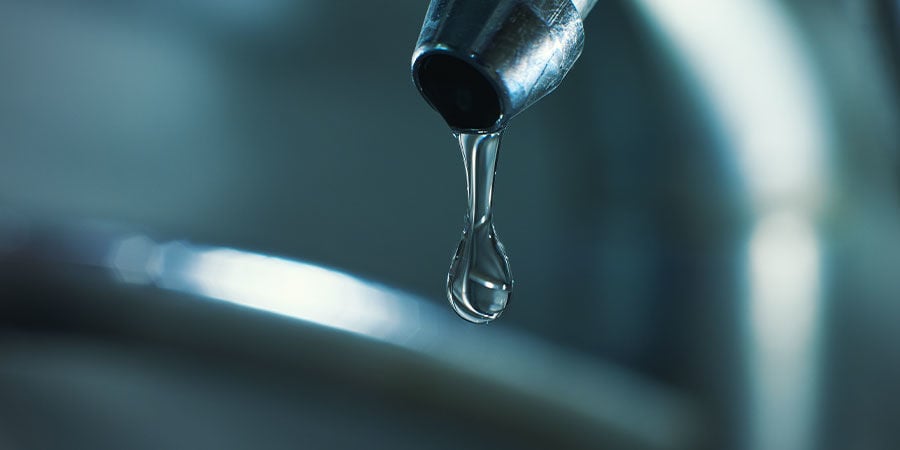
Though it might look similar, not all water is the same. Depending on where you live, tap water can have wildly different nutrient compositions, meaning that some sources are suitable, whereas some will throw your feeding off completely. The more precise you get with your grow, the more this will matter. A very simple hobby grow will cope more easily with unfiltered tap water, for example.
Here are some of the various water sources you can choose from.
Unfiltered tap water
As mentioned, this can contain all manner of nutrients and chemicals. A lot of tap water contains chemicals such as chlorine, which, though they may not damage your plants too much, certainly don’t make for an organic grow. Likewise, tap water could be full of nutrients like calcium, which might affect your feeding regimen.
Water collection systems (rainwater)
Collecting rainwater is cheap and—so long as it doesn’t sit for too long—a good way to secure a supply of pure water. Rainwater is naturally filtered, so it’s a great option for your plants. Lacking toxic chemicals or nutrients, it means you can water happily without messing up the balance in your soil.
Bottled water
Bottled water is pretty pure and can help to ensure your grow remains organic. Though it may well contain a lot of nutrients, the benefit is that these will be listed, so you can account for them in your feeding schedule.
On the whole, though, we’d advise you to avoid this option. Buying hundreds, if not thousands, of litres of bottled water for your cannabis plants will take a significant toll on the environment—and your budget.
Reverse osmosis systems (filtered tap water)
If you can afford it (they’re pretty expensive), getting an RO filter attached to your main water supply means you'll have a ready supply of purified water, straight from your tap. If growing the very best cannabis is your main concern, then this is a good option. Plus, you get clean drinking water too!
Other variables to keep in mind when watering cannabis
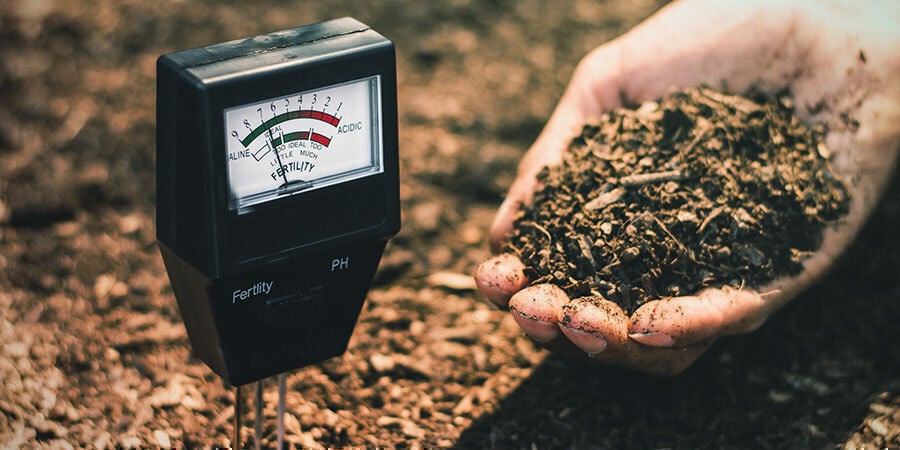
Understanding the variables in water that might affect the health and vitality of your cannabis plants is crucial. Even if you have what you believe to be the perfect water source, it might not be viable unless you consider the following.
Water temperature
Generally, cool, but not cold, water is best. The temperature of water coming out of your tap will work fine. Hot water could damage your plant and kill the organic life in the soil, and properly cold water could shock the plant's roots, which is especially damaging during the earlier stages of life.
pH and ppm values
Though a pH level of 7.0 (neutral) is where pure water sits, most water is actually slightly above this. As the cannabis root zone likes a pH level of 6.0–6.5, using water that isn’t first pH-balanced could stunt growth a little. Likewise, many water sources will contain nutrients and minerals, affecting the ppm value of the water. For first-time growers, these shouldn’t matter too much. But they will make a difference for those aiming for optimised results.
For the slightly more advanced, investing in a pH meter and EC meter will help to ascertain what the pH and ppm values in your water source are, and how best to balance levels out. Do you need to make it a little more or less acidic, or alkaline? Should you dial down the amount of feed you’re adding? Developing a good grasp on these factors will help you get the most from your grow.
How to water plants while you’re away
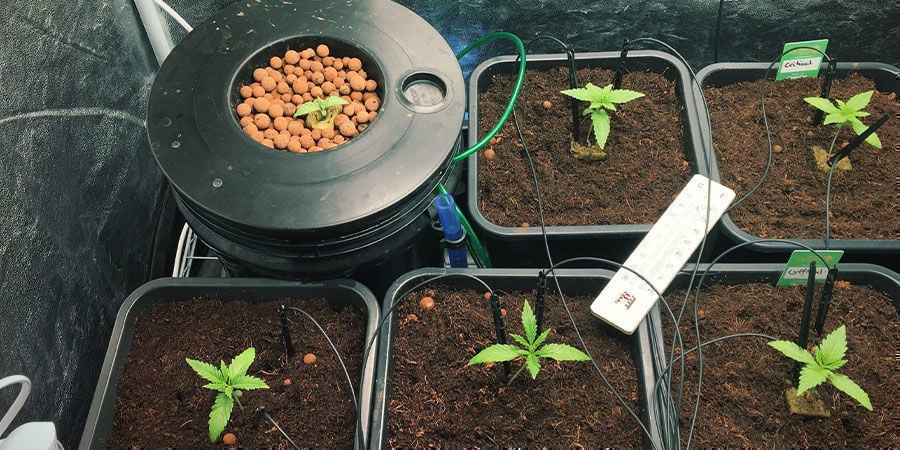
A cannabis grow, on average, will take at least 3 months. It’s highly likely that, at some point, you’ll need to go away for a bit. How should you keep your plants watered in the meantime? Here are some ideas:
- Ask a trustworthy friend
- Instal a DIY drip system
- Use a greenhouse
- Use automatic watering stakes
- Invest in an automated irrigation system
Watering cannabis: an essential skill
At first thought, watering a cannabis plant might seem simple. However, it’s actually one of the most finicky parts of growing. By learning to understand the different factors at play, you put yourself in good stead.
Primarily, though, you must learn to read the cannabis plant, and let it tell you what it needs. However complex this might seem now, a little care and attention will show you that they’re actually pretty communicative little beings.





 United States
United States











